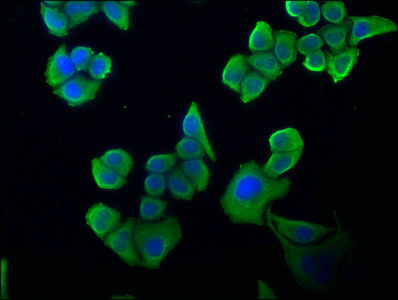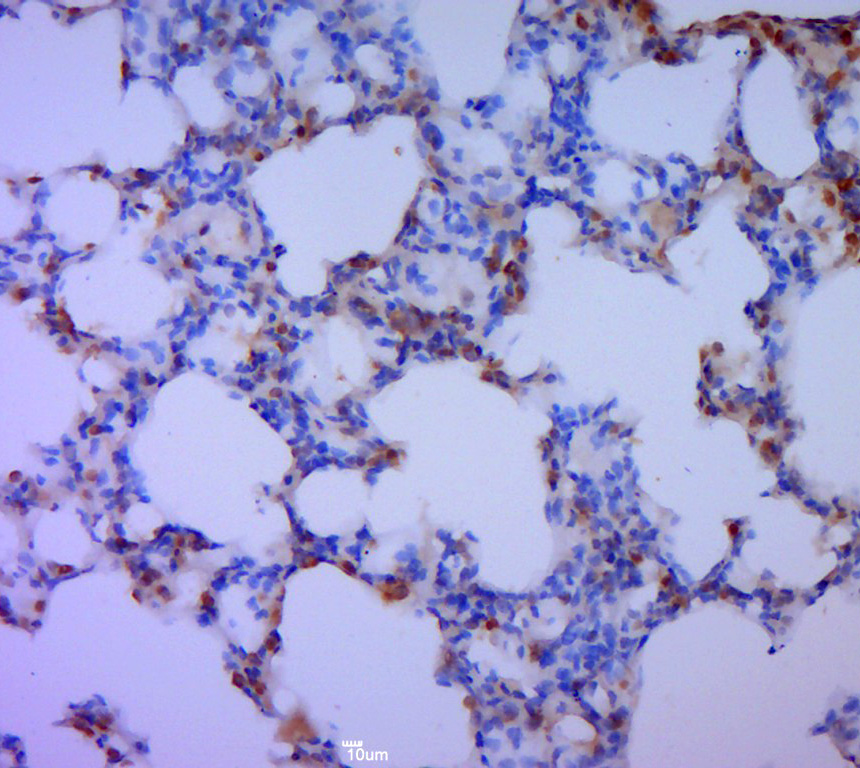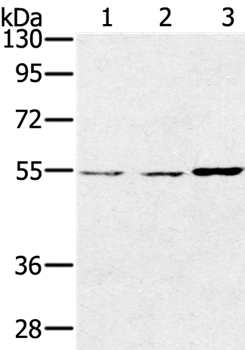
Immunofluorescence staining of Hela cells with CSB-PA021096NA01HU at 1:100, counter-stained with DAPI. The cells were fixed in 4% formaldehyde, permeabilized using 0.2% Triton X-100 and blocked in 10% normal Goat Serum. The cells were then incubated with the antibody overnight at 4°C. The secondary antibody was Alexa Fluor 488-congugated AffiniPure Goat Anti-Rabbit IgG(H+L).
SESN2 Antibody
CSB-PA021096NA01HU
ApplicationsImmunoFluorescence, ELISA
Product group Antibodies
ReactivityHuman
TargetSESN2
Overview
- SupplierCusabio
- Product NameSESN2 Antibody
- Delivery Days Customer20
- ApplicationsImmunoFluorescence, ELISA
- CertificationResearch Use Only
- ClonalityPolyclonal
- ConjugateUnconjugated
- Gene ID83667
- Target nameSESN2
- Target descriptionsestrin 2
- Target synonymsHI95, SES2, SEST2, sestrin-2, hypoxia induced gene 95, hypoxia-induced
- HostRabbit
- IsotypeIgG
- Protein IDP58004
- Protein NameSestrin-2
- Scientific DescriptionFunctions as an intracellular leucine sensor that negatively regulates the TORC1 signaling pathway through the GATOR complex. In absence of leucine, binds the GATOR subcomplex GATOR2 and prevents TORC1 signaling (PubMed:18692468, PubMed:25263562, PubMed:25457612, PubMed:26449471, PubMed:26612684, PubMed:26586190). Binding of leucine to SESN2 disrupts its interaction with GATOR2 thereby activating the TORC1 signaling pathway (PubMed:26449471, PubMed:26586190). This stress-inducible metabolic regulator also plays a role in protection against oxidative and genotoxic stresses. May negatively regulate protein translation in response to endoplasmic reticulum stress, via TORC1 (PubMed:24947615). May positively regulate the transcription by NFE2L2 of genes involved in the response to oxidative stress by facilitating the SQSTM1-mediated autophagic degradation of KEAP1 (PubMed:23274085). May also mediate TP53 inhibition of TORC1 signaling upon genotoxic stress (PubMed:18692468). Has an alkylhydroperoxide reductase activity born by the N-terminal domain of the protein (PubMed:26612684). Was originally reported to contribute to oxidative stress resistance by reducing PRDX1 (PubMed:15105503). However, this could not be confirmed (PubMed:19113821).
- ReactivityHuman
- Storage Instruction-20°C or -80°C
- UNSPSC41116161





